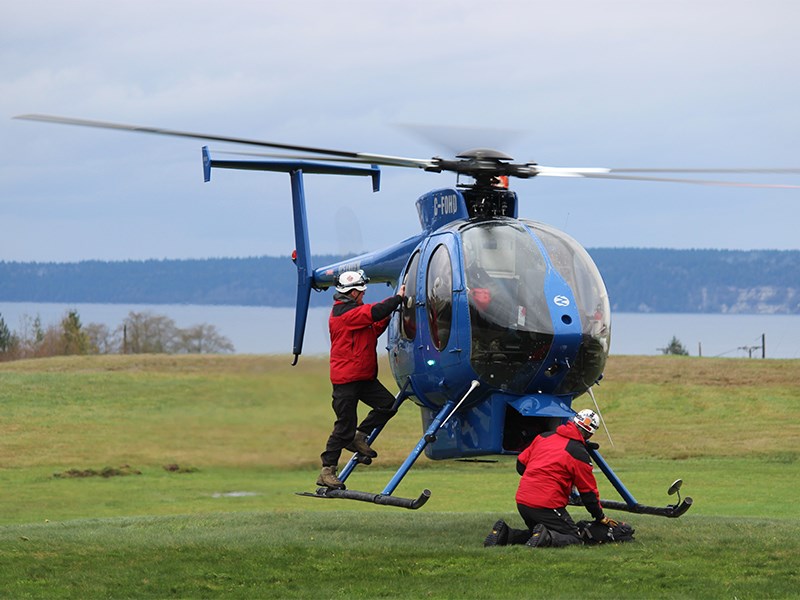The backcountry can be an accident waiting to happen. Attending between 15 and 30 rescue calls annually, volunteer crew from Powell River Search and Rescue (PRSAR) covers hundreds of square kilometres in the region’s backcountry.
The area is seeing a surge in use by outdoor adventurers who rock climb and mountaineer, hike the Sunshine Coast Trail, kayak, boat, and ski, snowshoe and snowmobile in the Knuckleheads winter recreation area.
“The call-outs we’ve had in the last few years have increased because of this huge backcountry,” said PRSAR training officer Andy Perkonig. “People get hurt out there, so search and rescue is getting more calls, and more of those calls are where we utilize helicopters.”
According to Perkonig, it is one thing to be able to access where people are by helicopter, but another entirely to land in that exact location.
The most recent call PRSAR responded to came from up Powell Lake. According to Perkonig, a woman had sustained multiple fractures in a boating incident. The rescue crew was flown in to the location by helicopter.
“We found a landing area, it was a small float,” said Perkonig. “The pilot decided it was safe to land on. We looked after her and flew her out.”
To aid in these type of rescues, PRSAR recently completed training exercises in conjunction with Oceanview Helicopters.
“We were doing a hover exit,” said Oceanview’s chief pilot Matt Larocque. “A lot of times when we go on a call with search and rescue there is not necessarily a good place to land. We can put the helicopter in some pretty tight spots but the aircraft is not completely on the ground.”
The exercise was to conduct an actual crew pickup in a controlled environment, which entails much more than climbing in and taking off.
According to Perkonig, the helicopter is partially flying with one skid on the ground or the front of the skid down. The rescue crew has to enter and exit with heavy gear.
“It’s hovering so they can get us fairly close to, or right close to, the people,” he said. “Where they can’t land, we can get out when the machine is flying.”
Perkonig and Larocque said the simulation was to stress that safety is paramount. Larocque said the helicopter is a tool like any other and the biggest thing to learn is to become comfortable around the machine and not to rush.
According to Perkonig, a rescue is a coordinated and precise operation. When hovering, a helicopter’s downdraft from the rotors forces crew members to crouch while they enter or exit. It is noisy, so communication is made through hand signals. In that situation, the adrenalin of the volunteer crew is at a high point.
“A lot of volunteers have never had anything to do with helicopters,” said Perkonig. “What we’re trying to do is train people in a very controlled environment on what the helicopter will do when you transfer weight.”
According to Larocque, working around a helicopter, remembering everything taught in a briefing and putting it into practice when real calls come can be intimidating.
Perkonig had firsthand experience during a rescue about 10 years ago. The crew had to hike for six hours through snow and pitch-black conditions. He said he was carrying a heavy pack with all of the ropes used for rescues.
“At 4 am, I’m going down this really steep slope at the front of the team and I stepped into a hole,” he said. “It spun me around and my knee was caught between two trees; it broke my knee. Then I went off the cliff, so they had to fly two people out. There was no way they could land a helicopter anywhere so I made my way, dragging my leg up the mountain about 300 metres, to a place they could pick me up.
According to Perkonig, the person PRSAR was initially called to rescue had been laying at the bottom of the cliff for 18 hours.
“They brought three other helicopters to get our team,” he said, “because they were just exhausted.”



